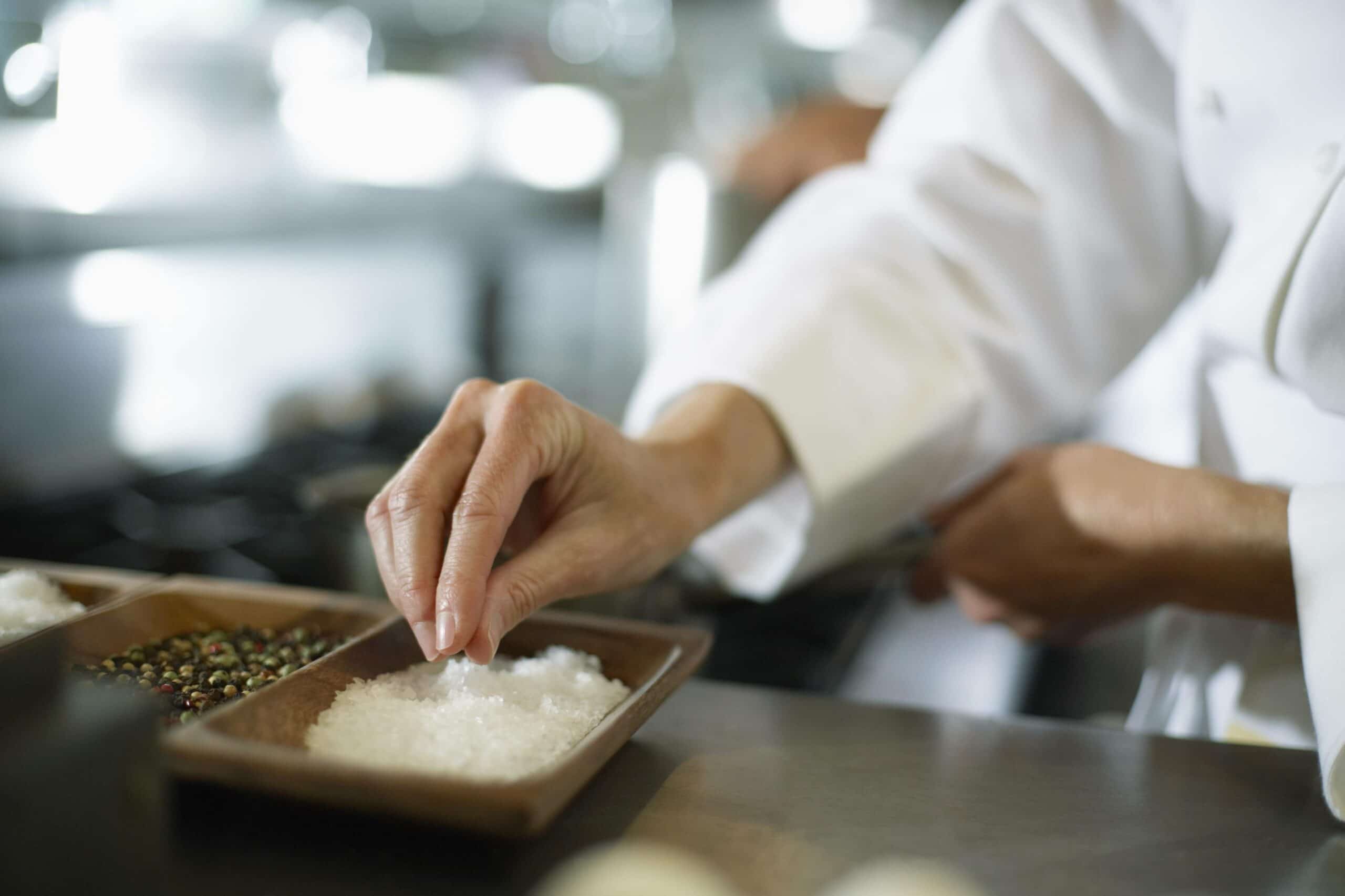
When a recent report from the Centers from Disease Control and Prevention was released about sodium use by Americans, you may have been shocked by the findings. The average American gets much more sodium than is healthy mainly because of processed foods. According to the CDC, 77 percent of sodium intake comes from processed and restaurant foods, while 12 percent is found naturally in food and the rest from home cooking and what we add at the table. So even if we never use the salt shaker, we’re probably getting too much sodium!
So what is sodium? Sodium and salt are often used interchangeably, but they’re not exactly the same thing. Sodium is a mineral that occurs naturally in foods or is added during manufacturing or both. Table salt is a combination of sodium and chloride. By weight, salt is about 40 percent sodium and 60 percent chloride.
Sodium is definitely essential to our body—it’s regulated in the body by the kidneys, it’s one of the controls of fluid balance, helps send nerve impulses and affects muscle function. However too much can raise blood pressure and cause fluid retention which makes the heart work harder.
The newest dietary recommendations for healthy people age 14 and over is to limit sodium to less than 2,300 mg per day. People 51 and older and those of any age who are African Americans or who have high blood pressure, diabetes or chronic kidney disease should further reduce sodium intake to 1,500 mg per day
The American Heart Association suggests learning what these label terms mean:
- Sodium-free: Less than 5 mg of sodium per serving and contains no sodium chloride
- Very low sodium: 35 mg or less per serving
- Low sodium: 140 mg or less per serving
- Reduced (or less) sodium: At least 25 percent less sodium per serving than the usual sodium level
- Light for sodium-reduced products: If the food is low calorie and low fat and sodium is reduced by at least 50 percent per serving
- Light in sodium: If sodium is reduced by at least 50 percent per serving
So how to begin to reduce your sodium intake:
Stop adding salt to your food
- Take the salt shaker off of the table
- Do NOT add salt when cooking
- Many folks say food tastes bland without salt so try adding salt-free spices and herbs, sprinkle fresh lemon juice or vinegar over vegetable and salads, and season meat, poultry or fish with onion, garlic, herbs & spices.
Change the foods you like to a low sodium version
- Consider getting a low-sodium cookbook
- Use low sodium substitutes for foods you like and eat often
- Some (but not all) sodium is removed from canned foods by rinsing them
Pick foods that are naturally low in sodium
- Any fresh or fresh-frozen beef, lamb, pork, poultry and fish
- Eggs, dry beans & peas (not canned), low-sodium peanut butter & canned fish
- Rice, pasta , corn, noodles, unsalted popcorn, chips and pretzels
- Fresh & frozen fruit & vegetables without sauces, most dried fruit
- Vegetable oils, unsalted butter or margarine, low-sodium salad dressings & mayonnaise and desserts made without salt
- Homemade soup without added salt & low sodium canned and dehydrates soups, broth or bouillon
Learn to read food labels
- Always check the portion size on the label so you know the size discussed
- Next to the word ‘sodium’ is grams, then the % DV, if the % DV is 5% or below, it is a low sodium food
While reducing your sodium intake may seem like a difficult task, it can be done, after a while you won’t miss it!









